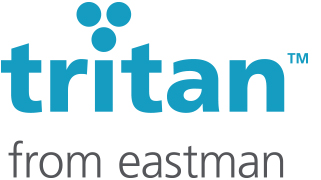
Regulatory agencies agree
At Eastman, we believe our responsibility is to develop new materials that make a positive difference in everyday life. That responsibility includes helping our customers tap into the growing consumer demand for products that are both safe and reliable.
Tritan has been certified by the world’s leading agencies for food contact safety, including:

Provided clearance for use in food contact applications

Provided clearance for use in food contact applications

The executive arm of the European Union (EU), which approved the Plastics Implementing Measure, allowing the use of a key Tritan monomer for repeat-use food contact applications

Allowed the use of Tritan in food contact applications

Amended its list of certified polymers to include the composition of Tritan

Released an initial list of certified, safe food contact packaging materials that includes Tritan

Approved Tritan for food equipment materials (NSF 51) and drinking-water system components (NSF 61)

Material Safety Certified






